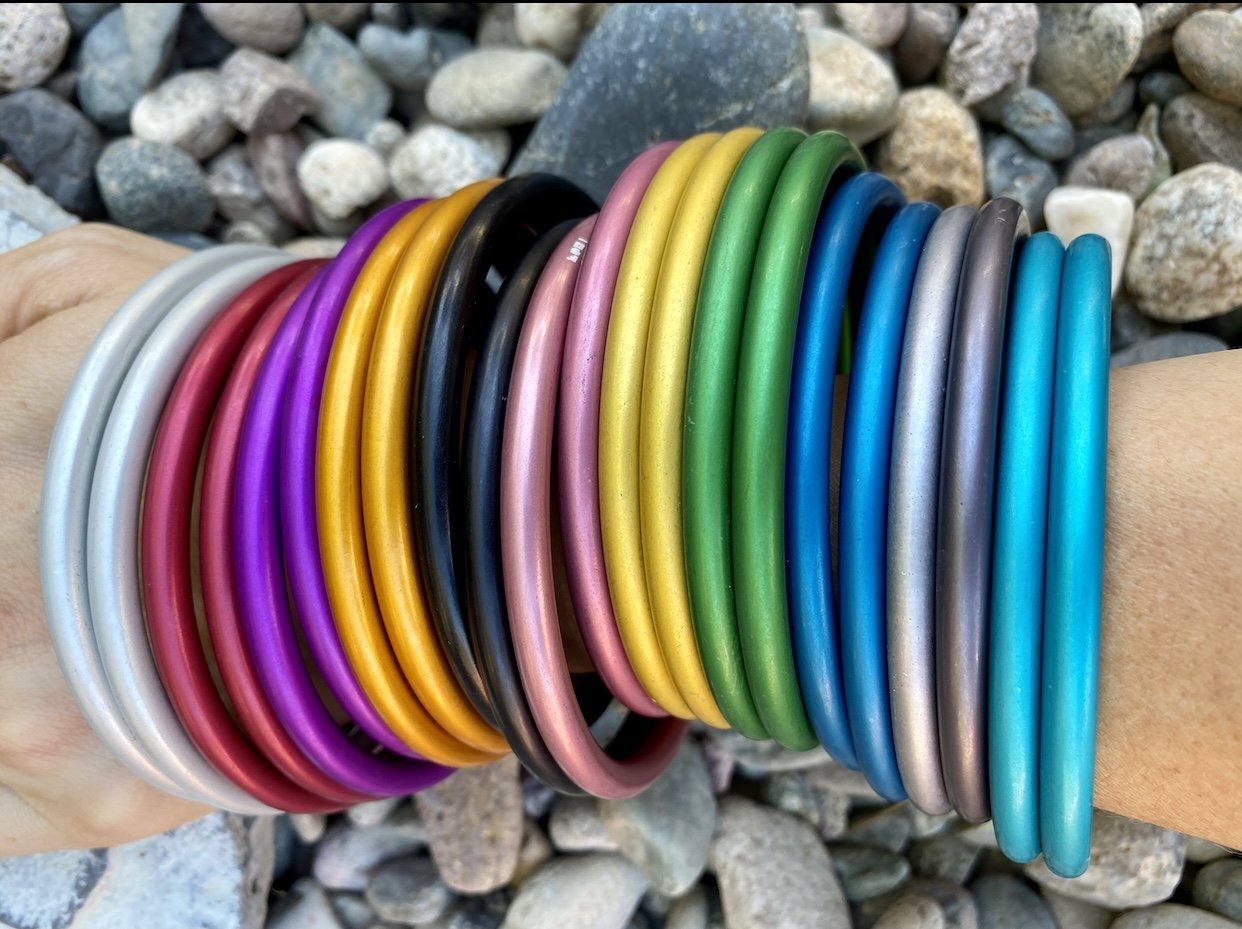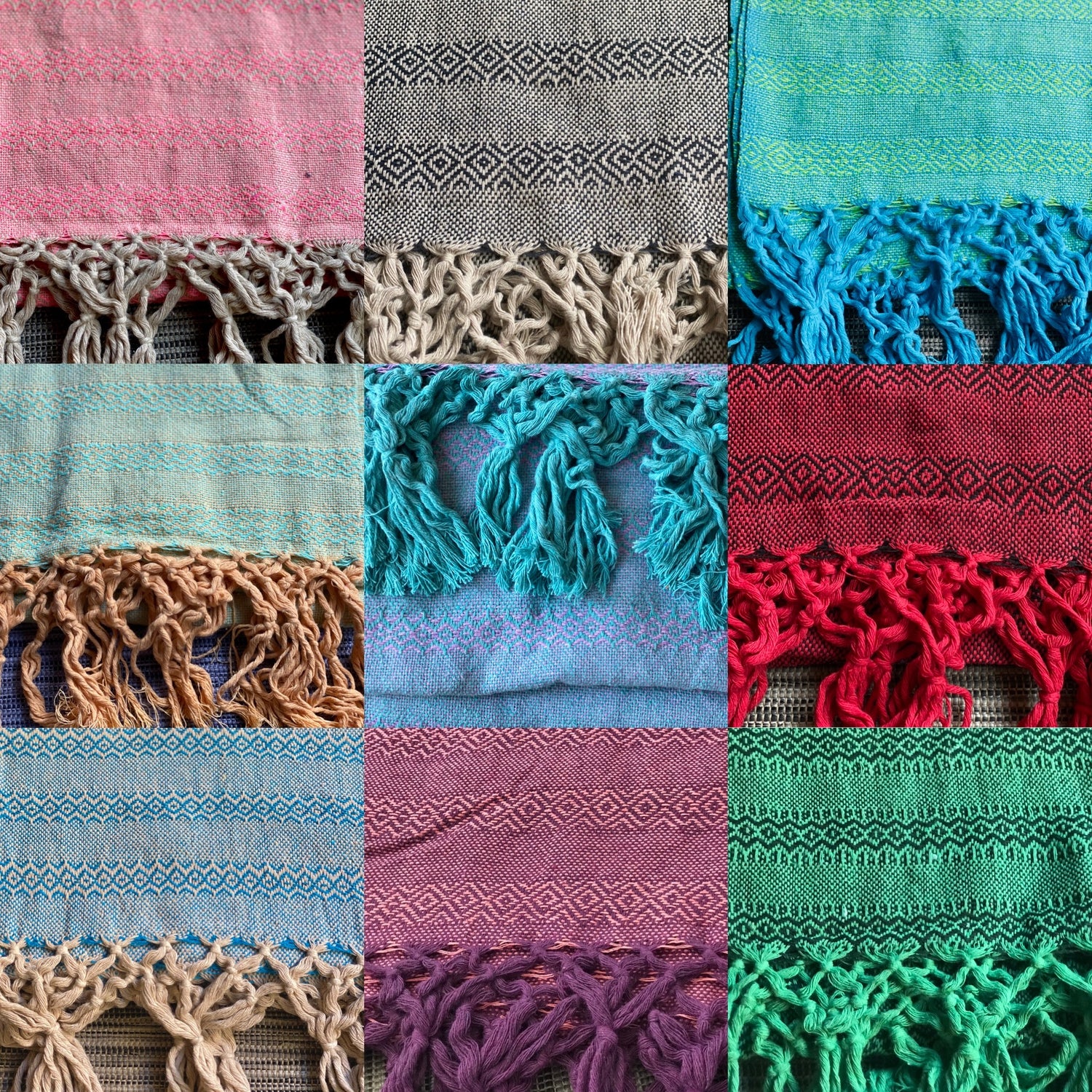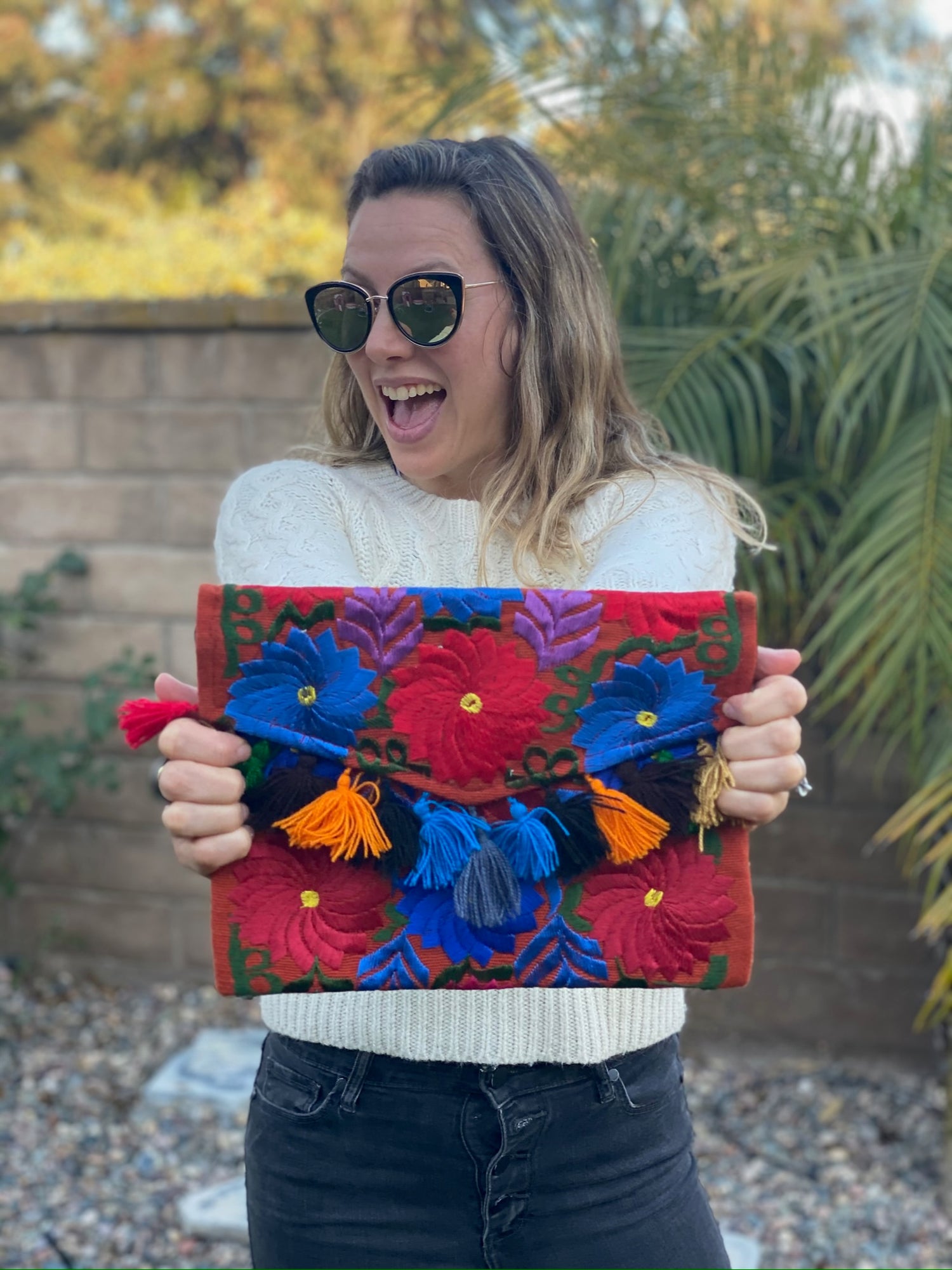When looking for the best places in Mexico to purchase authentic rebozos, you're exploring a rich tradition that goes beyond simple fashion.
You will find that the most meaningful pieces come from local artisans who reflect the culture and history of their regions. These beautiful shawls are not just accessories; they carry stories and skills passed down through generations.

Visiting areas known for rebozo production, such as Tenancingo, can enhance your shopping experience. Here, you can meet the artisans and appreciate the craftsmanship that goes into each piece.
This connection to the makers adds value and authenticity to your purchase, ensuring the rebozo you choose is steeped in cultural significance.
As you prepare to discover these authentic textiles, keep in mind the unique characteristics that make each rebozo special.
Engaging with local markets not only supports the community but also allows you to take home a piece of Mexico's vibrant heritage.
Key Takeaways
- Authentic rebozos reflect the rich culture and history of Mexico.
- Local artisans provide unique and meaningful pieces.
- Purchasing rebozos supports traditional craftsmanship and communities.
Historical and Cultural Significance of Rebozos

Rebozos are more than just traditional shawls; they reflect a deep cultural heritage in Mexico. Understanding their origins and role in modern society reveals their impact on identity and artistry.
Origins and Evolution of the Rebozo
The rebozo has its roots in Mexican indigenous culture, primarily linked to the artisans and women who wove them. Initially crafted by indigenous women from cotton or agave fibers, these shawls served practical purposes such as a baby carrier or a wrap for everyday use.
During the colonial period, the influence of Spanish culture brought new techniques and styles to rebozo weaving. This blending resulted in unique patterns, including those created by mestizo artisans. The word "rebozo" is derived from the Nahuatl term "rebozo," emphasizing its indigenous origins.
Over time, the rebozo evolved into a symbol of Mexican identity, celebrated for its rich artistry and diverse styles.
Rebozos in Modern Mexican Society
In contemporary Mexico, rebozos hold significant cultural value. They are worn by women of all ages and backgrounds, symbolizing pride in Mexican heritage.
The shawl transcends mere functionality and becomes a fashion statement, often decorated with vibrant colors and intricate designs.
Artisans continue the tradition, preserving the techniques of their ancestors while innovating to meet modern tastes. Icons like Frida Kahlo helped popularize the rebozo as a fashion item in their own ways, showcasing its artistic beauty.
Today, the rebozo represents connection, tradition, and the resilience of Mexican culture. By choosing a rebozo, you embrace a piece of history that tells the story of the artisans and communities who created it.
Authentic Rebozo Artisanship and Purchasing Tips

When looking for authentic rebozos, understanding the craftsmanship and supporting ethical producers is key. You'll discover the unique qualities of these garments and where to find them while ensuring your purchases support local artisans and fair trade.
Identifying Authentic Rebozos
To find authentic rebozos, focus on their materials and craftsmanship.
True rebozos are often made from high-quality cotton, silk, or wool. Check for handwoven designs created on traditional looms.
Rebozos may feature ikat patterns, where the threads are tie-dyed before weaving. Look for finishes with fringe, a hallmark of genuine rebozos.
Inspect the stitching and feel the softness to ensure comfort. Authentic pieces may showcase vibrantly dyed colors from indigo or other natural dyes, reflecting the artisan's skill and heritage.
Best Places to Purchase
Several regions in Mexico are known for their rebozo production.
Head to Tenancingo, famed for its skilled weavers who create beautiful handwoven pieces. In Michoacán and Chiapas, you can find local markets featuring a variety of styles.
Online stores like Lola My Love offer a curated collection of handmade rebozos with shipping options to over 100 countries. These platforms often emphasize the artistry behind each garment, ensuring you receive quality and authenticity.
Supporting Ethical and Fair Trade Practices
When buying a rebozo, consider supporting mission-driven organizations that promote fair trade.
By purchasing from artisans who practice ethical methods, you contribute to their livelihoods. Look for certifications or guarantees of fair pay and working conditions.
This way, you know your purchase positively impacts local communities. Buying from reputable vendors ensures your rebozo is not only authentic but also supports local artisans and sustainable practices, making your investment more meaningful.
Frequently Asked Questions

Understanding rebozos can enhance your appreciation for this beautiful garment. Here are answers to some common questions about authentic rebozos and their significance in Mexican culture.
What regions in Mexico are famous for producing authentic rebozos?
Several regions in Mexico are known for their unique styles of rebozos. Tenancingo is especially noted for its intricate ikat designs. Other areas like San Pedro de la Bendita and Oaxaca also produce beautiful, handcrafted rebozos.
How can I identify an authentic Mexican rebozo?
To identify an authentic Mexican rebozo, look for quality craftsmanship and traditional weaving techniques. Genuine rebozos often have unique patterns and colors.
Checking for labels that indicate fair-trade practices can also help you find authentic pieces.
What historical significance does the rebozo have in Mexican culture?
The rebozo has deep historical roots in Mexican culture. It has been worn by women for centuries, serving practical and symbolic purposes.
Traditionally, it represents femininity and is a connection to cultural heritage and family traditions.
What are some traditional materials and weaving techniques used in rebozos?
Rebozos are often made from materials like cotton, wool, or silk. Weaving techniques vary by region, with some using backstrap looms.
The intricate patterns often reflect local culture and the artisan’s skill.
How are rebozos used in Mexican cultural practices and ceremonies?
Rebozos are versatile garments used in various cultural practices. They can be worn during traditional ceremonies, religious events, or everyday life.
Additionally, they are used to carry babies, showcasing their practical role in family life.
Can you recommend any markets or shops renowned for their selection of genuine rebozos?
For authentic rebozos, visit markets in regions like Oaxaca and Chiapas. Shops such as Lola My Love offer a wide selection.
Local artisan markets often have direct purchases from makers, ensuring you get genuine pieces.




